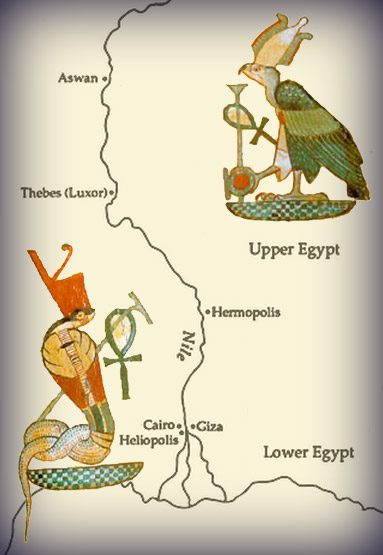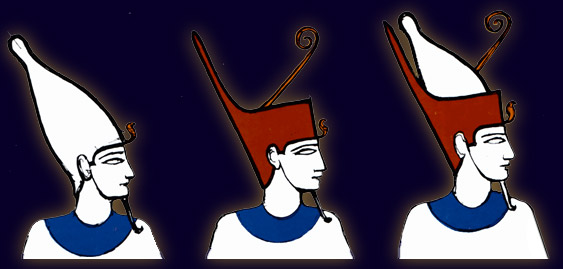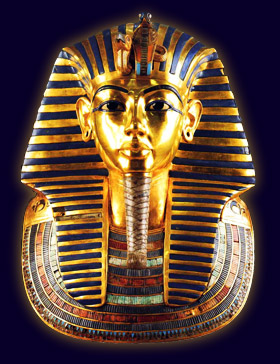A Kingdom United
The Egyptian civilisation lasted for three thousand years: a millennium more than the time elapsed since its decline.
In ancient Egypt, the land was seen as a reflection of the individual. The Nile was the equivalent of the World Tree: the axis mundi, the backbone of the country, the source of all life.
Along the axis of the Nile, the country was divided into two kingdoms – an upper kingdom protected by a vulture goddess (Nekhebet) and a lower kingdom protected by a cobra goddess (Buto).

The bird-serpent pairing (upon a central axis) is a striking precursor to the imagery of the Caduceus. Further correspondence is found in the allocation of colour. Nekhebet has upon her head a white crown, Buto a red one, reflecting the convention for the pharaoh of Upper Egypt to wear a white crown (the Hedjet), that of Lower Egypt a red one (the Deshret). The two became a double crown (the Pschent) upon unification of the two lands.

At this point, Buto and Nekhebet became joint protectors and patrons of all Egypt. They can be seen side-by-side on the funerary mask of Tutankhamun, emblems of the two lands over which he reigned.

Bird and snake in equal standing.

 TOP
TOP NEXT
NEXT